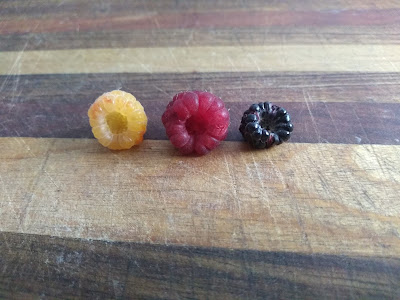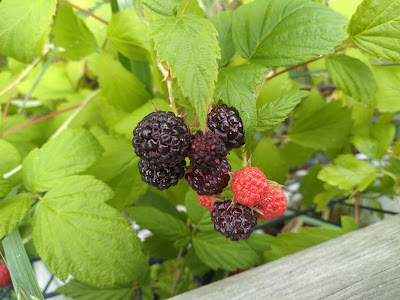I have written a few blog posts on growing Chinese water chestnuts in buckets and flexitubs, it's easy and they are very productive when grown like that. As well as this I also grow a few aquatic vegetables in milk bottles.
Growing water chestnuts in a milk bottle is not ideal. When grown like this the yield is low or even non-existent, but it keeps the plants alive. They can survive by growing in a milk bottle like this for years.
I cut the base off a plastic milk bottle, fill it three quarters with soil, plant a corm, and add water to the top. From here, I just top up the water. Simple.
 |
| Chinese water chestnuts |
I first did this as a short term thing so I could sell duck potatoes or water chestnuts at a garage sale. I told people to plant them into something larger if they wanted an edible size crop. Someone asked me how long the plants can survive like this because their pond was not yet ready. I didn't know, I told them to give it a try and if they died I would replace them. I never heard back so assumed it went well.
Out of curiosity I kept growing some Chinese Water chestnuts in milk bottles to see how long they can last like this. I assumed they would last a few months with no problem. It turns out they will live like this for several years!
Below are duck potatoes and watercress growing in a milk bottle. This is their third year. The water cress drops seed and grows by itself. The duck potatoes go dormant each winter. They multiply, but only slowly due to the lack of space.
 |
| Duck potatoes growing in a milk bottle |
 |
| Duck potato, water chestnuts, and water cress |
What you can't see from my photos is the amount of life in the water. It is incredible just how many tiny organisms are in there. There are heaps of tiny things swimming around that can be seen even without a microscope.
 |
| Azolla and duck weed starting to come back |
It can be difficult to buy Chinese water chestnuts or duck potatoes at certain times of year. Many people want to buy them to put in a pond or a water feature, but need more time to plan and build the water feature. Buying the plants when they are available, and growing them in the base of a milk bottle like this, solves the problem. They easily survive like this as long as needed, and can be planted into the water feature when it is ready. If it isn't ready until next year, that's fine.
I have a for sale page on this blog where I sell water chestnuts and duck potatoes and other perennial vegetables in Australia. I update the page regularly, and it has my email address that you can use to contact me.



































